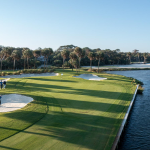The brewing of beer has been around for centuries. Drunk all around the world, it has found favor among many different cultures. Of diverse types, the British brought their knowledge of it to the colonies that have since become North Carolina. This is not to deny the brewing the Incas had performed for centuries before the Spanish arrived in Mexico. Yet these early breweries, though the basic principles remained the same, featured less sophisticated methods of beer carbonation than the breweries of today.
The Early Breweries
The first known European brewery appeared in New Amsterdam (now New York) under the care of Adrian Block, a Dutchman. The year was 1613. The second appeared with similar beer carbonation and production equipment in Manhattan. It was the under the ownership of the Dutch West India Company. The first year of operation was 1632.
Beer at this time was both a beverage and a medicine. It was nutritious and a source of enjoyment. It brought people together. Like other such enjoyable creations, however, it was to be enjoyed in moderation.
Charles II seized control of New Amsterdam in 1664. He turned over control of these lands to the Duke of York. He instituted the “Dukes Laws” concerning brewers and brewing facilities. The basics for producing beer were simple. You had to be trained and qualified in order to do so legally.
Yet, although beer was served as part of the pay for many soldiers in the American War of Independence, it was not the most popular brew up to and following the American Civil War. It was not to make any great inroads until the 19th century. At this point, the natural beer carbonation responsible for its flavor and head was to establish dynastic roots in both New York and Philadelphia.
The Brewing Dynasties
The 1800s saw the establishment of several breweries, notably by:
* David Yuengling in Pennsylvania 1829
* Frederick and Maximilian Schaeffer in New York 1838
* J Adam Lemp in St. Louis 1840
* John Wagner in Philadelphia 1840
The several brewers who followed them established brewing dynasties. Among them the noted Eberhard Anheuser who took over the Bavarian Brewery from George Schneider in 1860. He, together with his son-in-law Adolphus Busch, created the Anheuser-Busch beer empire.
In that same era, Frederick John Miller took over the Plank Road Brewery from Frederick Charles Best. The result was the Milwaukee Miller brewery. In 1873, Adolphus Coors moved to Golden, Colorado. Here, he founded his own brewery. These breweries were to flourish even during the slow period following both World Wars. They greeted and adapted their brewing techniques to all the changes in technology including beer carbonation.
Beer Carbonation
The advancement in technology over the years has resulted in newer methods including inline mixing and computerization of several processes. Today, while natural carbonation continues to contribute to the character of beer, equipment provides improved means of ensuring balance. One of the means through which today’s brewers accomplish this is through a quality beer carbonation system.







